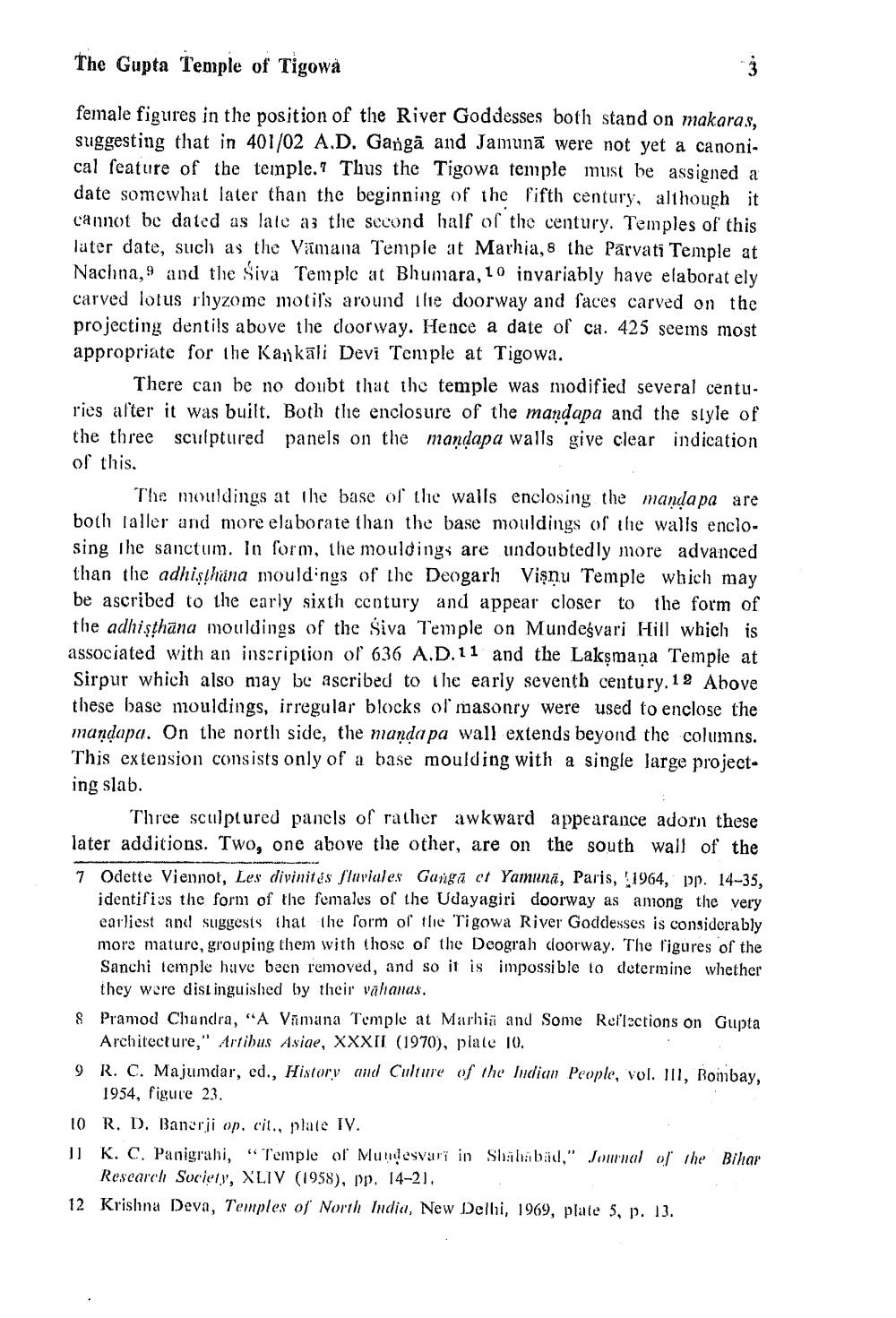Book Title: Sambodhi 1977 Vol 06 Author(s): Dalsukh Malvania, H C Bhayani, Nagin J Shah Publisher: L D Indology Ahmedabad View full book textPage 5
________________ The Gupta Temple of Tigowa female figures in the position of the River Goddesses both stand on makaras, suggesting that in 401/02 A.D. Ganga and Jamunā were not yet a canonical feature of the temple.? Thus the Tigowa temple must be assigned a date somewhat later than the beginning of the fifth century, although it cannot be dated as late as the second half of the century. Temples of this later date, such as the Vamana Temple at Marhia, 8 the Parvati Temple at Nachna, 9 and the Siva Temple at Bhumara, 10 invariably have elaborat ely carved lotus rhyzome motils around the doorway and faces carved on the projecting dentils above the doorway. Hence a date of ca. 425 seems most appropriate for the Kai kāli Devi Temple at Tigowa. There can be no doubt that the temple was modified several centuries after it was built. Both the enclosure of the mandapa and the style of the three sculptured panels on the mandapa walls give clear indication of this. The mouldings at the base of the walls enclosing the manda pa are both taller and more elaborate than the base mouldings of the walls enclo. sing the sanctum. In form, the mouldings are undoubtedly more advanced than the adhisthana mouldings of the Deogarh Vişnu Temple which may be ascribed to the early sixth century and appear closer to the form of the adhisthana mouldings of the Siva Temple on Mundesvari Hill which is associated with an inscription of 636 A.D.11 and the Laksmana Temple at Sirpur which also may be ascribed to the early seventh century. 1 2 Above these base mouldings, irregular blocks of masonry were used to enclose the mandapa. On the north side, the manda pa wall extends beyond the columns. This extension consists only of a base moulding with a single large projecting slab. Three sculptured panels of rather awkward appearance adorn these later additions. Two, one above the other, are on the south wall of the 7 Odette Viennot, Les divinitas fluviales Ganga et Yamuna, Paris, 1964, pp. 14-35, identifies the form of the females of the Udayagiri doorway as among the very earliest and suggests that the form of the Tigowa River Goddesses is considerably more mature, grouping them with those of the Deograh doorway. The figures of the Sanchi temple have been removed, and so it is impossible to determine whether they were distinguished by their vahanas. & Pramod Chandra, "A Vamana Temple at Marhia and Some Reflections on Gupta Architecture," Artibus Asiae, XXXII (1970), plate 10 9 R. C. Majumdar, ed., History and Culture of the Judian People, vol. III, Rombay, 1954, figure 23. 10 R. D. Banerji op. cit., plate IV. Il K. C. Panigrahi, “Temple of Mundesvarī in Shahabad," Journal of the Bihar Research Society, XLIV (1958), pp. 14-21, 12 Krishna Deva, Temples of North India, New Delhi, 1969, plate 5, p. 13.Page Navigation
1 ... 3 4 5 6 7 8 9 10 11 12 13 14 15 16 17 18 19 20 21 22 23 24 25 26 27 28 29 30 31 32 33 34 35 36 37 38 39 40 41 42 43 44 45 46 47 48 49 50 51 52 ... 420
